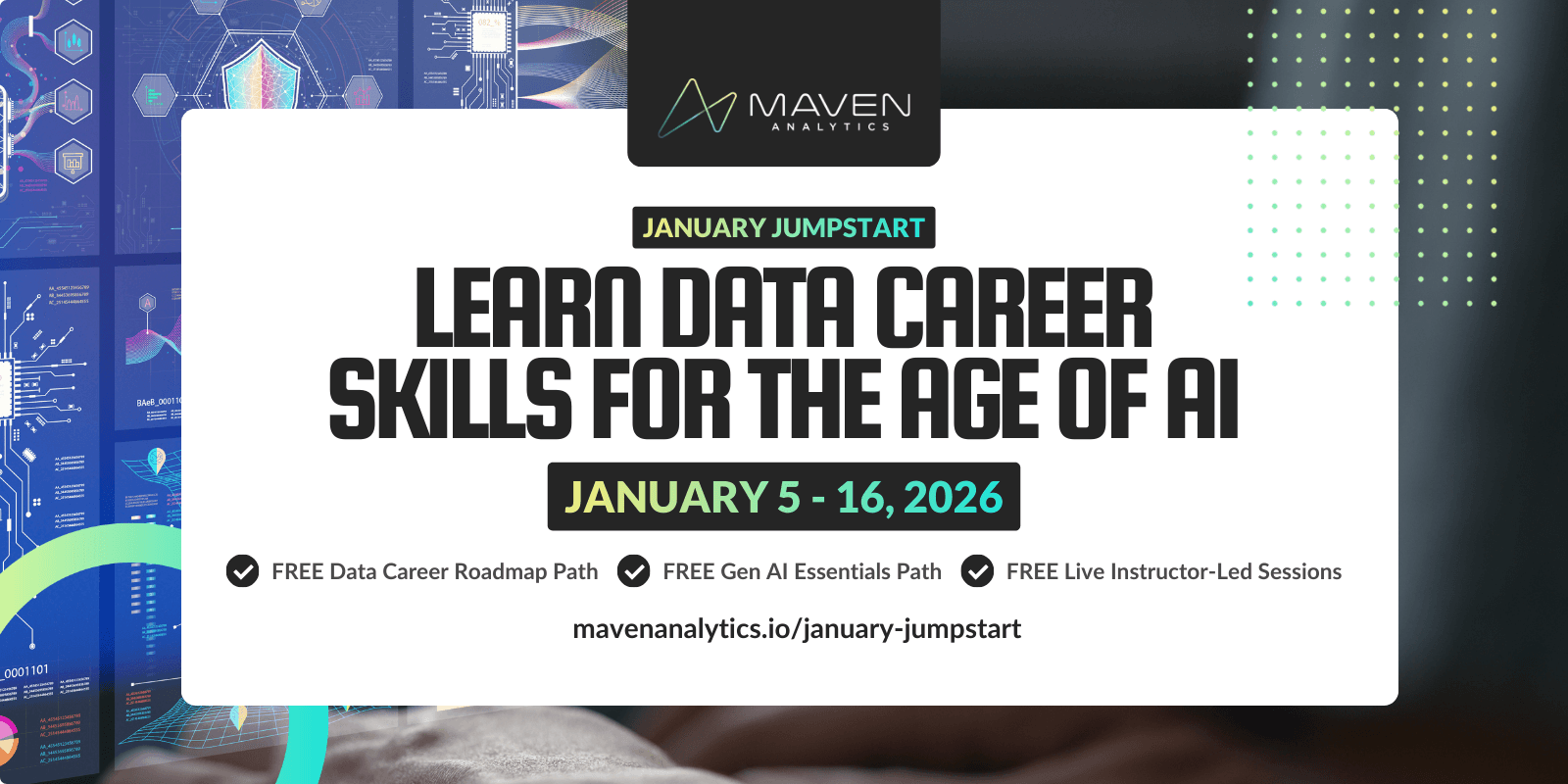“Data-Driven Decision-Making.”
You’ve heard the phrase used, but what does it really mean?
Isn’t every business decision informed by data?
(Short answer: they should be!)
Data is one of the most important and valuable assets that a business can own, but analytical thinking and data literacy skills are what bring that data to life and give it meaning.
“Data-driven decision-making” is the process of translating raw data into meaningful information, then using that information to derive insights that can help inform or influence decisions.
Sounds easy enough, but how exactly do you do it? How do you transform data into decisions?
Framework for Data-Driven Decision-Making
We’ve developed a helpful framework for data-driven decision making, which is loosely based on the popular DIKW pyramid (Data, Information, Knowledge, and Wisdom).
Like the DIKW pyramid, the idea here is that the further you move down this path, the more value you deliver.
Data
First, we start with data in its most raw, unprocessed state.
In this format, it has very little meaning or value. Just like oil, data needs to be mined, refined, and repackaged before it becomes useful for analysis.
Info
Once that data is processed, organized, and stored, it can be analyzed to capture useful information. This adds context and clarity for end users.
Insight
The next stage is transforming that information into data-driven insights, which are meaningful findings that can help inform recommendations and influence decisions.
Action
Last, but certainly not least, the final (and arguably most important) step in the framework is to use that insight to inspire stakeholders to take action – because no matter how insightful the analysis, it only adds value when it impacts real-world decisions.
What Does Data-Driven Decision-Making Look Like?
So let’s run through an example to see this process in action.
An example of the Data stage would be saying something like:
“There were 173 transactions in January.”
Ok, that’s a start, but we don’t have any context to make that number meaningful.
Is 173 transactions good? Is it bad? Is it better or worse than last month or the same time last year? How does it compare against benchmarks or forecasts?
Turning that data into Information might look like this:
“There were 173 transactions in January, up 75% over December. Fitness equipment and athletic apparel saw the largest month-over-month gains.”
With context, we now have some useful and meaningful information to work with. But this still doesn’t quite qualify as an insight. It tells us what’s happening, but doesn’t address WHY.
An Insight might sound something like this:
“Every January we see an uptick in sales and revenue, driven primarily by new customers looking to prioritize health and fitness in the new year.”
Now we’re getting at information that we can use to make some smart, data-driven recommendations for the business.
That takes us to our final step – inspiring Action:
“Based on this data, we recommend increasing advertising budgets and testing campaigns to promote top-selling health and fitness products in January.”
This is a clear, data-driven recommendation that ideally will drive decisions and actions that deliver a real impact for the business.
Examples of Data-Driven Decision-Making
If you look closely enough, you’ll see examples of data-driven decision-making everywhere!
Virtually all of the world’s top companies leverage data for everything from product design to pricing strategy, risk mitigation, financial modeling, process optimization, and much, much more.
Real-world data-driven decisions can look like…
Netflix and Spotify making recommendations for your next watch/listen
Amazon “magically” suggesting a product you’re likely to buy
Your favorite sports team evaluating talent for their roster
Your bank automatically detecting fraud
Uber connecting you to a nearby driver in real time
None of this would be possible without data.
Final Thoughts
Data is the most powerful asset a business can harness, but without knowing HOW to use it, you’re leaving valuable insights behind.
If you were feeling lost, I hope this framework has given you the confidence you need to unlock those hidden insights that can make an impact for your own work.
If you learn better visually, you can also find all of this information shared in this video crash course.
And if you’re a beginner looking to build your own data literacy skills even further, check out our FREE Data Literacy Foundations course.
Happy learning!
Coming Soon: Free Course Access + LIVE Learning
January Jumpstart 2026 is almost here; register today and don't miss a thing!
Join us January 5th - 16th to jumpstart the new year with LIVE instructor-led learning sessions and FREE course access to our top career & AI learning paths. Let’s make AI your new data superpower in 2026!

Chris Dutton
Founder & CPO
Chris is an EdTech entrepreneur and best-selling Data Analytics instructor. As Founder and Chief Product Officer at Maven Analytics, his work has been featured by USA Today, Business Insider, Entrepreneur and the New York Times, reaching more than 1,000,000 students around the world.










































